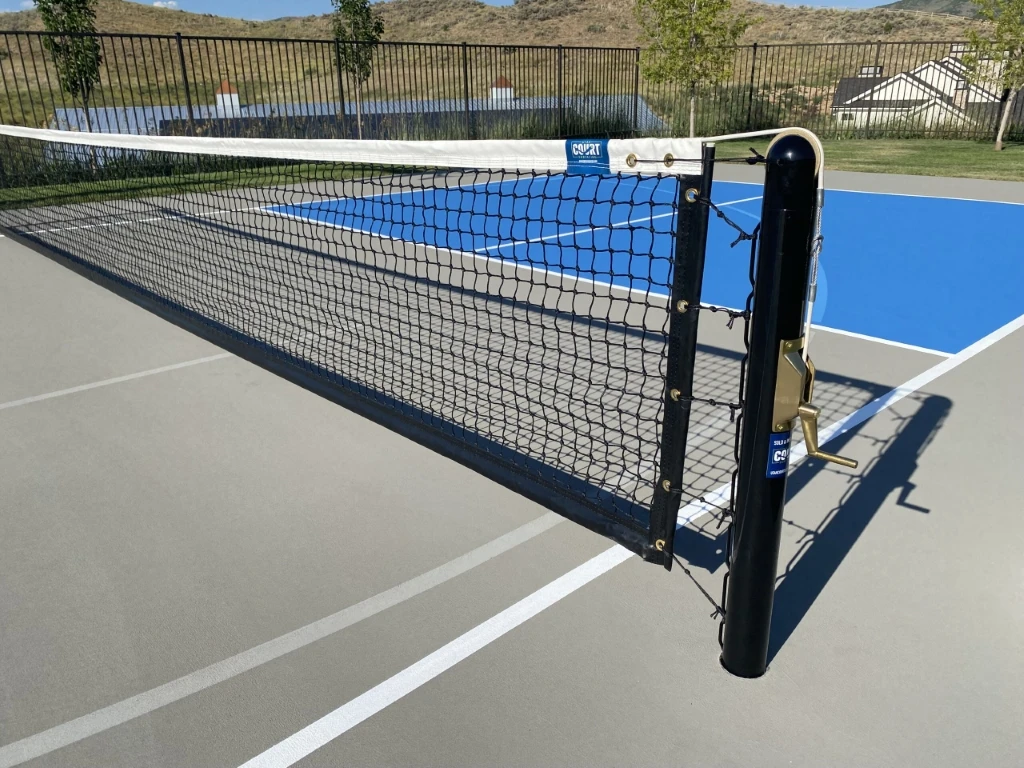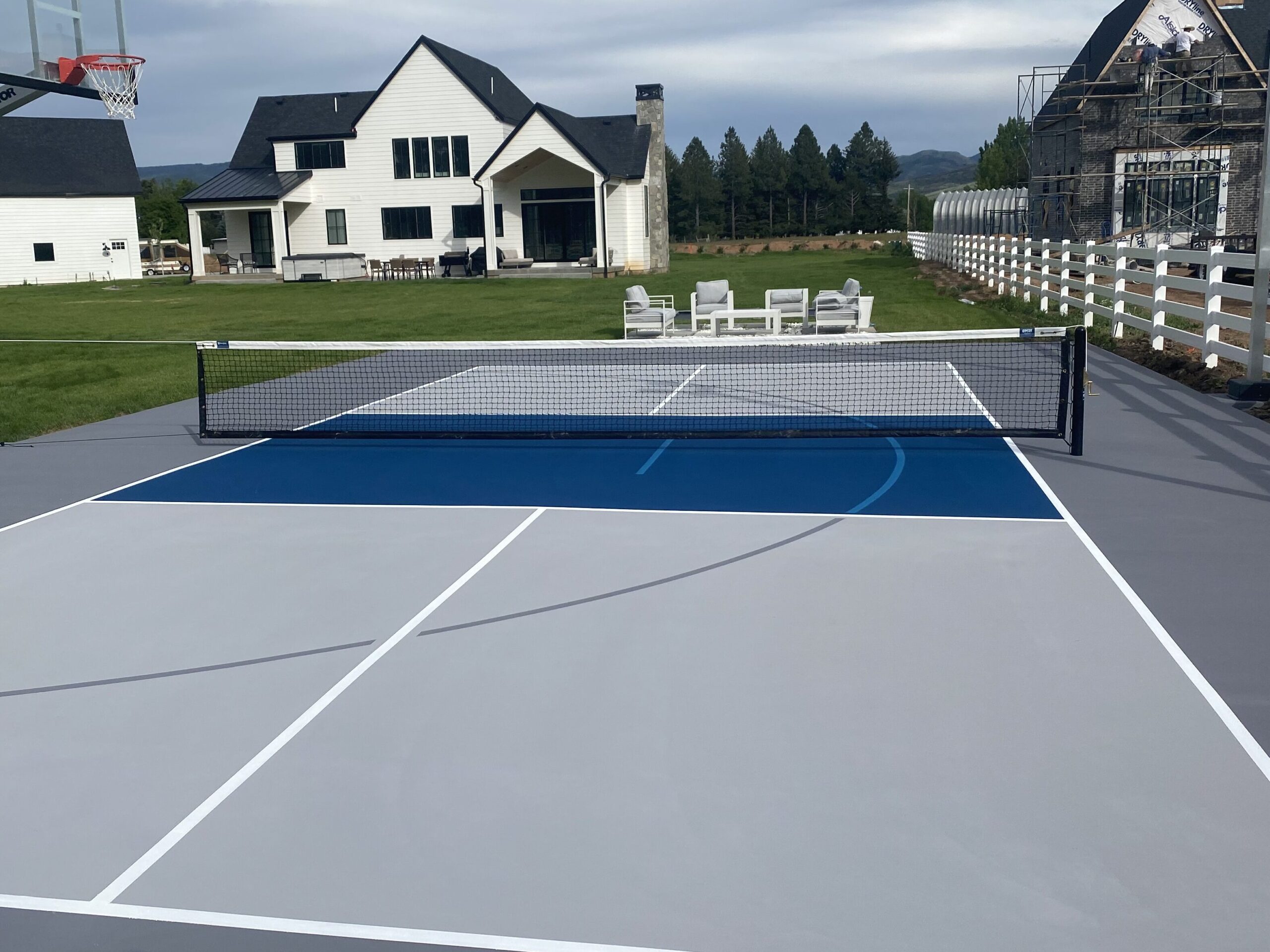
If you want to play a good game of pickleball, you need to have the right equipment. Among the most crucial pieces of equipment is the pickleball net system. It plays a key role in the gameplay and can impact your overall experience. Here’s a comprehensive guide to help you decide which of the net systems is perfect for your needs, whether you setting up a court at home, at a school, or in a recreational center.
Understanding the Basic Requirements
Before delving into specific products, let’s go over the official pickleball net specifications:
Net Height: The net should be 36 inches at the sidelines and 34 inches at the center.
Net Length: It should be 22 feet long from post to post.
Net Tension: A net should be tight enough to prevent sagging but not so tight that it causes excessive stress on the frame
Mesh Size: The mesh should be small enough to prevent the ball from passing through.
Types of Pickleball Net Systems
You have several types of pickleball net systems to choose from, each suited to different needs:
Portable Net Systems
A portable pickleball net is ideal for players who need a flexible option. It’s perfect for backyard games, road trips, or pop-up tournaments.
Pros: This net is lightweight so you can easily transport, set up, and take it down. Some of them even collapse into compact carrying cases. Choose a portable net if you need a net you can move between different locations.
Cons: A portable net can be less durable than a permanent one, and frequent assembly and disassembly may cause wear and tear over time.
Permanent Net Systems
A permanent net is installed on a fixed court and provides long-term solutions for public and private courts. It is attached to poles and sturdy enough to last many years. If you want to set up a permanent pickleball court, consider this net. Note that it may require professional installation.
Adjustable Net Systems
An adjustable net allows you to change the height of the net, which is particularly useful when you want to set up multiple types of courts (tennis, badminton, and pickleball). This net is best for families, recreational players, and those who value convenience.
Pros: This net is versatile, making it ideal if you want to use a court for multiple activities.
Cons: Because of its design it’s slightly more complex to set up and maintain.
Materials and Durability

Net are made from two different materials: nylon and polyethylene.
Nylon: Nylon nets are durable and weather-resistant, thus they resist fraying and can withstand outdoor conditions. These nets do tend to be more costly, but they last a long time.
Polyethylene: Polyethylene nets are lightweight, making them ideal for indoor use or in mild weather conditions. These nets tend to be more affordable than nylon nets.
Frames are made from steel and aluminum.
Aluminum: Aluminum is lighter than steel, resistant to corrosion, and easy to handle, making it ideal for portable systems. It may require more maintenance than steel frames.
Steel: Often used for permanent or high-end portable systems because it can handle regular use on different surfaces. It’s heavy-duty and resistant to weather but can rust if not properly maintained.
Tensioning Systems
A critical feature of any good net system is a reliable tensioning system. The tension should be tight enough to ensure no sagging but not so tight that it risks breaking the frame. There are different methods for adjusting net tension:
Ratcheting Systems: Ratcheting systems are most commonly used in portable net systems. They allow for easy and precise adjustments.
Spring-loaded Systems: These are common in permanent nets as they provide stable and consistent tension.
Manual Adjustments: Some net systems use ropes or hooks for manual adjustments.
Maintenance Tips

To keep your pickleball court net functioning properly for years to come, you need to practice proper maintenance:
Clean Regularly: Wash the net with mild soap and water to remove dirt and debris then rinse it thoroughly. Let the net air dry completely.
Check Tension: Make sure the net remains taut and adjust the tension if needed.
Inspect for Wear: Check for any tears, frayed threads, loose cords, or damaged mesh in the netting. Make small repairs now to avoid larger, costly issues in the future.
Store Properly: When not in use, store portable net systems in a dry, cool place to prevent damage from moisture and temperature fluctuations.
The Right Net Makes All The Difference
Choosing the right pickleball net system depends on your specific needs. Whether you need it for casual play, competitive events, or permanent installation — keep in mind factors like durability, ease of setup, and cost when making your decision. By understanding the different net systems, you can find the perfect one for your pickleball setup.
